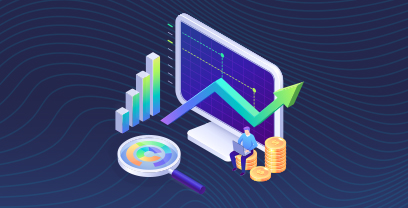Business Spend Management (BSM) is crucial for organizations looking to enhance operational efficiency and financial performance. By prioritizing BSM, organizations can achieve visibility into their financial outflows, enabling them to identify inefficiencies, reduce costs, improve supplier relationships, and allocate resources more strategically.
This comprehensive approach not only ensures financial health and operational efficiency but also fosters innovation and resilience by aligning spending with business objectives and market demands. As such, BSM is not merely a function of the finance department but a strategic component integral to overall business success.
In this post, we’ll take a deep dive into business spend management, including the benefits, challenges and steps to implement BSM. We’ll also take a look at how Source-to-Pay solutions can facilitate a successful BSM program in your organization.
What is Business Spend Management (BSM)?
Business Spend Management (BSM) refers to the processes, practices and tools organizations use to manage, control and optimize spending. BSM covers a wide range of activities, including supplier management, Sourcing, contract management, procurement, invoicing, expense management, and spend and financial analysis, aiming to increase efficiency, reduce costs and improve the bottom line while ensuring compliance and mitigating risk across all spending activities.
Why Business Spend Management is Important
BSM brings about a holistic approach to managing all aspects of organizational spending, leading to better financial performance, enhanced operational capabilities and a stronger foundation for strategic growth.
Ardent Partners found that best-in-class organizations have 77% of their spend under management, compared to just 56% for all others, leading to better budget adherence and cost control.
Key benefits of business spend management include:
- Cost Control: BSM helps organizations identify and eliminate wasteful spending, negotiate better terms with suppliers and consolidate purchases to achieve bulk discounts.
- Increased Visibility and Transparency: By centralizing spend data, BSM provides clear insights into where and how money is being spent, allowing for more informed decision-making and strategic financial planning.
- Risk Mitigation: Effective BSM practices enhance compliance with regulatory requirements and internal policies, reducing the risk of financial penalties, fraud and reputational damage.
- Operational Efficiency: Streamlining procurement and expense processes through BSM tools reduces administrative burdens, freeing up resources for more value-added activities.
- Strategic Decision-making: With comprehensive spend analysis, organizations can make strategic decisions about supplier relationships, investment opportunities and cost-saving initiatives.
- Enhanced Supplier Management: BSM fosters better relationships with suppliers through efficient procurement processes, timely payments and effective communication, leading to improved service levels and potential for innovation.
Expense Management vs. Business Spend Management
Expense Management and Business Spend Management are related yet distinct aspects of financial oversight within organizations, each focusing on different areas of spending.
Expense Management primarily deals with the processes and policies governing employee-incurred expenses, such as travel, entertainment, and office supplies. It involves tracking, processing, and reimbursing employee expenses, ensuring they comply with company policies. The goal of expense management is to streamline the approval, reporting, and reimbursement of employee expenses, often facilitated by specialized software to reduce manual errors and improve efficiency.
Business Spend Management, on the other hand, is a broader concept that encompasses a wide range of spending activities across the entire organization. BSM includes expense management but extends much further to cover procurement, supplier and contract management, strategic sourcing, and spend analysis. BSM aims to provide a comprehensive view of all organizational spending to optimize costs, improve operational efficiencies, ensure compliance, and mitigate risk across all types of expenditures, not just employee expenses.
How Spend Management is Integrated with Other Procurement Processes
BSM encompasses a wide range of procurement activities, including sourcing, purchasing, contract management and supplier relationship management. By integrating these processes, spend management provides a unified platform where data from various procurement activities is centralized, offering a comprehensive view of organizational spending, facilitating seamless workflows and ensuring that procurement activities are aligned with the organization’s financial goals and policies.
BSM’s integration extends to financial systems such as accounts payable and general ledger, ensuring that procurement decisions are reflected accurately in the organization’s financial records. This harmonization between procurement and finance allows for real-time budget tracking, improved financial forecasting and enhanced compliance with internal and external financial regulations.
Key Areas of Business Spend Management
Business spend management encompasses several key categories that work together to optimize and control an organization’s expenditures:
- Supplier management: Evaluating and managing the performance of suppliers to ensure they meet the company’s standards for quality, cost, delivery and service.
- Strategic sourcing: The process of developing supply channels at the lowest total cost, not just the lowest purchase price, by analyzing and continuously improving purchasing activities.
- Contract management: the administration of contracts between an organization and its suppliers, ensuring that terms are fulfilled, performance is tracked and compliance is maintained.
- Procure-to-pay process (P2P): An end-to-end workflow that starts with requisitioning goods and services and ends with making payments to suppliers, encompassing procurement, receiving, invoicing and payment stages. P2P is primarily made up of:
- Procurement: The process of d buying goods and services that are essential for the organization’s operations.
- Invoicing: The processing and payment of invoices received from suppliers, including verifying the accuracy of invoices, ensuring that the goods or services billed were received and meeting the agreed-upon terms and managing timely payments.
- Expense Management: Establishing policies for what expenses are reimbursable, tracking these expenses and ensuring they comply with company policies before reimbursement.
- Supply Chain Management: Managing relationships and collaborating with suppliers to ensure supply chain’s resilience and efficiency, while optimizing costs and quality across the supply chain.
- Spend Analysis: Collecting, classifying, and analyzing expenditure data to identify spending patterns, uncover savings opportunities, and improve procurement efficiency.
Who is Responsible For Business Spend Management?
BSM is for more than just procurement teams; it plays a critical role across various executive functions within an organization. For example, McKinsey found that companies that digitize their supply chains can expect to boost annual revenue growth by 2.3%.
For a successful BSM implementation, a critical best practice is to actively involve stakeholders from various departments, such as finance, procurement, IT and operations, right from the outset. Their input is invaluable in understanding the unique challenges and requirements of each department. Remember: stakeholders are more likely to support a system they’ve had a hand in shaping
For Chief Financial Officers (CFOs), BSM is pivotal in achieving financial clarity and control over the organization’s spend, directly influencing the bottom line. It enables more accurate forecasting, budgeting and financial reporting, helping CFOs to manage cash flow effectively, identify cost-saving opportunities, and ensure regulatory compliance and financial integrity.
The Chief Procurement Officer (CPO) relies on BSM to optimize procurement strategies, ensuring that the organization secures the best value from its supplier relationships. BSM provides insights into spending patterns, supplier performance and contract compliance, allowing CPOs to negotiate more favorable terms, mitigate supply chain risks and drive procurement efficiencies.
Chief Supply Chain Officers (CSCOs) gain a comprehensive view of the supply chain spend that helps to streamline operations. By integrating procurement data with supply chain management, CSCOs can improve supplier collaboration, reduce costs, enhance logistics and inventory management, and ensure the resilience and sustainability of the supply chain.
BSM helps align IT spending with business goals by providing Chief Information Officers (CIOs) the tools to manage IT procurement, license compliance and vendor performance. They can also use it to facilitate strategic IT sourcing, manage cybersecurity risk, and budget for digital transformation initiatives.
Challenges in Spend Management
Before businesses can capitalize on these opportunities, they must overcome many common challenges. From decentralized spend data, supplier management inefficiencies, poor spend visibility and lack of automation.
Implementing a spend management solution often requires significant changes in organizational processes, technologies and culture, as employees and management may resist adopting new systems and workflows.
BSM relies heavily on the quality and consistency of data across various systems, so inaccurate, incomplete or inconsistent data can undermine spend analysis and decision-making. Not only that – integrating disparate functions such as procurement, finance or HR to create a cohesive BSM framework can be technically challenging, requiring significant time and resources to ensure seamless data flow and interoperability.
Effective BSM requires strong relationships with suppliers, but managing these relationships can be complex. BSM functions like procurement, invoicing and expense management, which are not only time-consuming but also prone to error. To make matters worse, non-compliance with internal policies or external regulations can result in financial penalties and reputational damage.
Addressing these challenges requires a strategic approach to BSM that leverages spend analysis software to automate and integrate processes.
Steps for Implementing a Business Spend Management Strategy
Developing and executing a BSM strategy involves a structured approach. Here are the key steps in this process:
Step 1: Assess the Current State of Spending
Conduct a thorough analysis of existing spend management processes, including procurement, invoicing and expense management. Identify current spend across various categories and departments to understand where and how resources are being utilized, and evaluate existing challenges, such as inefficiencies, lack of visibility or compliance issues, to establish a baseline for improvement.
Step 2: Set Goals and Objectives
Define clear, measurable objectives for your BSM strategy and align BSM goals with broader organizational objectives to ensure support from stakeholders. Prioritize objectives based on their potential impact and feasibility.
Step 3: Choose the Right Spend Management Software
Be sure to research and evaluate and choose a BSM platform that meets your organization’s specific needs. Consider conducting demos or pilot tests with shortlisted vendors, and make a selection based on a comprehensive analysis of features, costs and potential ROI.
Step 4: Implement the Spend Management Solution
Develop a detailed implementation plan, including timelines, resource allocations and key milestones, and ensure proper integration with other mission critical systems. Make sure you provide comprehensive training for users to encourage adoption.
Step 5: Measure and Improve Performance
Establish key performance indicators (KPIs) related to enterprise spend management – savings achieved, procurement cycle times, compliance rates and supplier performance metrics – and regularly monitor and analyze performance against these them to identify areas for improvement.
Aligning the BSM strategy with overarching business goals is another critical practice. By ensuring that enterprise spend management objectives contribute directly to the company’s strategic priorities, organizations can secure executive support and ensure resources are allocated effectively.
Community data and industry benchmarks can help to inform and refine your BSM strategy. Comparing performance metrics, spending patterns and process efficiencies against industry standards helps identify gaps and opportunities for improvement. Regularly reviewing and updating BSM processes and practices in response to changing business needs, technological advancements and lessons learned can further enhance the effectiveness and sustainability of your BSM strategy.
Spend Management Software: How to Choose the Right Solution
Choosing the right spend management software for business spend management is a critical decision that requires careful consideration of several key factors to ensure the solution aligns with your organization’s needs and objectives. Questions to ask during the vendor evaluation process include:
- How does your solution integrate with our existing ERP and other enterprise systems?
- How can the software be tailored to our specific business processes and workflows?
- What data security measures and compliance standards do you adhere to?
- What is the typical implementation timeline? What resources are required from our side?
- How scalable is your spend management solution?
- What training and support services do you offer?
- How do you handle software updates and upgrades?
- Can you provide references from other clients?
- What is the total cost of ownership, including setup fees, subscriptions and potential additional charges for extra features or services?
- How does your solution support mobile access and remote work capabilities?
- What analytics and reporting capabilities does your software provide?
Asking these questions will provide a deeper understanding of the spent management software’s capabilities, how it aligns with your needs and what to expect in terms of implementation, support and costs. Use Ivalua’s Spend Analysis Data Sheet to understand your spend and uncover opportunities to manage spend with Spend Analysis software.
How to Automate Business Spend Management With Ivalua
Ivalua’s Source-to-Pay software is designed to automate and streamline procurement and enterprise spend management processes across an organization. The software provides a comprehensive suite of tools to manage the entire spend lifecycle, from sourcing and procurement to invoice management and spend analysis.
By integrating various aspects of spend management, from procurement and sourcing to contract management and analytics, Ivalua transforms complex, manual processes into efficient, automated workflows. This automation not only accelerates operations but also reduces the likelihood of errors, ensuring compliance and enhancing operational efficiency, while also providing real-time visibility into spending and supplier performance.
Ivalua’s advanced analytics capabilities offer deep insights into spending patterns, as well, enabling businesses to identify cost-saving opportunities and make informed strategic decisions. This comprehensive approach enables organizations to control costs more effectively, mitigate risks and, ultimately, drive better business outcomes.
Ivalua is honored to have been recognized in the 2024 Gartner “Magic Quadrant for Source-to-Pay Suites.” The inaugural Gartner report evaluated Source-to-Pay (S2P) solutions from 10 software vendors across a broad set of criteria, placing Ivalua in the Leaders Quadrant.
Case Study: Successful Business Spend Management Implementation
CACI provides information solutions and services in support of national security missions and government transformation for Intelligence, Defense, and Federal Civilian customers. The organization was looking to improve efficiency and empower Procurement and AP to analyze, not re-enter data. They wanted to streamline procurement and accounting processes and enable full visibility throughout the procurement process.
However, separate systems for PR, PO, Invoicing and Payment was forcing users to log in to multiple systems andre-enter data, and the ERP system did not meet Procurement or stakeholder needs.
After implementing Ivalua, they went virtually 100% paperless and addressed 95% of spend through sourcing process and formal agreements. They also cut costs by 30%. Read the full case study.
Manage Spend the Right Way With Ivalua
Prioritizing Business Spend Management is essential for optimizing operational efficiency and achieving cost savings, which are vital for business success. It enhances spending visibility, improves financial controls, and fosters strong supplier relationships, making organizations more agile and resilient.
Ivalua’s Source-to-Pay platform supports these goals by automating procurement processes, offering real-time spend analytics and facilitating strategic supplier management. With Ivalua, businesses can streamline their spend management practices, enabling better decision-making and fostering long-term growth.




